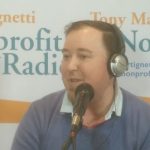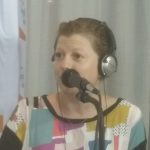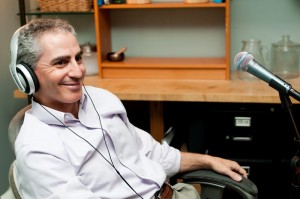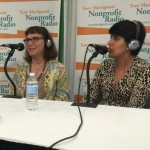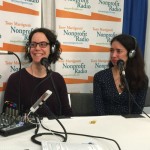
Claire Taylor Hansen & Jennifer Daw Holloway: Brand Democracy
Continuing our coverage of the 2023 Nonprofit Technology Conference, a conversation about letting go and democratizing your brand, so it’s collectively owned. The why’s, what’s and how’s are explained by Claire Taylor Hansen of Big Duck, and Jennifer Daw Holloway with Ipas.


John Coogan & J. Michael Fisher: What To Avoid When Selecting Your Next CRM
John Coogan of CharityEngine and J. Michael Fisher at the Army Historical Foundation, pose the key questions to answer internally before you go shopping, reveal must-have functionality, and share insider secrets, all to help you avoid the common pitfalls of CRM system purchases. This is also part of our 23NTC coverage.


Listen to the podcast
Podcast: Play in new window | Download
Get Nonprofit Radio insider alerts!
I love our sponsor!
Donorbox: Powerful fundraising features made refreshingly easy.
We’re the #1 Podcast for Nonprofits, With 13,000+ Weekly Listeners
Board relations. Fundraising. Volunteer management. Prospect research. Legal compliance. Accounting. Finance. Investments. Donor relations. Public relations. Marketing. Technology. Social media.
Every nonprofit struggles with these issues. Big nonprofits hire experts. The other 95% listen to Tony Martignetti Nonprofit Radio. Trusted experts and leading thinkers join me each week to tackle the tough issues. If you have big dreams but a small budget, you have a home at Tony Martignetti Nonprofit Radio.
View Full Transcript
Processed on: 2023-06-30T17:56:29.654Z
S3 bucket containing transcription results: transcript.results
Link to bucket: s3.console.aws.amazon.com/s3/buckets/transcript.results
Path to JSON: 2023…07…647_tony_martignetti_nonprofit_radio_20230703.mp3.725695555.json
Path to text: transcripts/2023/07/647_tony_martignetti_nonprofit_radio_20230703.txt
[00:00:31.23] spk_0:
And welcome to tony-martignetti non profit radio. Big non profit ideas for the other 95%. I’m your aptly named host of your favorite abdominal podcast. Oh, I’m glad you’re with me. I’d be forced to endure the pain of acute flaccid myelitis if you made me nervous because you missed this week’s show,
Brand Democracy. Continuing our coverage of the 2023 nonprofit technology conference, a conversation about letting go and democratizing your brand. So it’s collectively owned the wise. What’s and how’s are explained by Claire Taylor Hanson of Big Duck and Jennifer Doll Holloway with I Pass and what to avoid when selecting your next CRM, John Coogan of Charity Engine and J Michael Fisher at the Army Historical Foundation posed the key questions to answer internally before you go. Shopping, reveal must have functionality and share insider secrets all to help you avoid the common pitfalls of CRM system purchases. This is also part of our 23 and TC coverage on Tony’s take two. I’m available. We’re sponsored by Donor box with intuitive fundraising software from donor box. Your donors give four times faster helping you help others. Donor box dot org here is Brand democracy. [00:02:43.62] spk_0:
Welcome back to tony-martignetti, non profit radio coverage of 23 NTC. You know what that is. You know, it’s the 2023 nonprofit technology conference and that we are at the Colorado Convention Center in Denver. And you also know that we are sponsored here at 23 NTC by Heller consulting technology strategy and implement it for nonprofits what you don’t know now, but you are about to is that my guests right now are Claire Taylor Hanson, who is creative director at Big Duck and Jennifer dot Holloway, Director of Communications at I pass, Claire and Jim. Welcome to nonprofit radio. Thank you. Thank you. Pleasure to have you both. Your session is coming up. This is a good preparation on brand democracy. Um So I’m going to say Claire as the agency representative of the agency, client relationship, representing Big Duck agency. What is brand democracy? [00:03:41.27] spk_2:
Sure. Well, first Big Duck, we think of brand as the impressions that you’re forming in your, in your audiences, the impressions that your nonprofit creates out in the world. And so when we think about brand democracy, we’re shifting our orientation to the history of branding, which is about single ownership. It’s about signaling value. It’s about tightly controlling the impressions that you’re making. It’s about regulating who’s communicating on behalf of the brand. And you’re switching, you’re thinking you’re thinking to instead being about collective ownership of the brand. And so you’re equipping your community of supporters to communicate on behalf of the brand and to really be the brand and inhabit the brand. So it’s really about sharing power and sharing the power of brand in a way that’s aligned more with many nonprofits these days that are thinking more about how can we share and distribute power and how we can communicate and build a brand. That’s more representative of who we are as a non profit and a mission led organization [00:04:10.33] spk_0:
and Jen as the agent as the nonprofit representative. This all sounds very scary like it’s anarchy that we’re gonna lose control. The brand is going to be diluted. People aren’t going to use the right colors. There’s Farrah trumpeter trumpeter offstage. Hello, how are you? Good to see you. I love the purple highlight too. From Big Duck in Brooklyn in Brooklyn [00:04:14.42] spk_2:
were now distributed across the country and beyond office in Brooklyn. No, we don’t. We’re now fully distributed, distributed. [00:04:31.13] spk_0:
All right, used to be a Brooklyn based. Um So Jen, now I’m concerned the colors are gonna be right. People are gonna write, I pass with my period, period, period, period going to dilute the name, the brand, everything is gonna be anarchy and everything that we have invested in our brand is going to be lost. Why is that not true? If we democratize [00:05:22.34] spk_3:
our brand, it is totally not true. And like Claire said, um we’re uh an ingo. So we’re fairly large, we’re working about 18 countries. Um We have offices in 18 countries. We work in about 30 countries around the world. So brand democracy for us is really important because we’re our core values are justice equity, right? So good. Um We are an organization that is working to expand abortion and contraception access around the world. We are working toward global reproductive. Your work is cut [00:05:31.31] spk_0:
out for you in the United States for about the past 12 months [00:06:26.18] spk_3:
or so. It’s true right now. Today news happening. Yes. So um brand democracy for us is really important because we are actually our structure is changing. So we’re we’re not when we will no longer be a kind of a hub and spoke organization with power centered in the United States. We are shifting it, pushing it out, decision make, authority, shared leadership to the places that are closest to our work and closest to the people we aim to serve. So brand democracy allows more engagement. It’s about representing the brand in a way that is best for the communities that you’re serving and that you are part of. So and it’s about trusting our teams to know what is best for the community and their context. [00:06:27.90] spk_0:
Alright. Um Can you go further and allay the fears of your fellow directors of Directors of Communications may be ceos that everything we’ve invested in the brand is now going to be torn asunder. [00:06:44.05] spk_3:
Oh, no, no, no. I how can we trust, [00:06:47.31] spk_0:
you’re not community to do the brand, the justice that we want them to. Well, [00:07:08.54] spk_3:
I think because in brand democracy, when you’re thinking about the brand, your refreshing it or you’re doing a kind of brand, check up what you’re doing is engaging your community in defining and refining the brand so that you’re kind of living it. You, you understand the brand, the brand represents your core values, represents your mission and vision. So those are common threads throughout our country offices around the world. The mission, the mission and the vision are the same the way that the colors that you might use. They may vary a little bit. It’s okay. It’s okay. [00:07:31.05] spk_0:
Okay. Maybe a couple of weeks of decimals off. I [00:07:43.33] spk_3:
mean, the logo is set, but you can use it in different ways. You can use it with a tag line, you can use it without a tag line, but it’s still the local. [00:09:01.53] spk_2:
Can I build on that? Well, I think we were talking about last night, Jen um at our happy hour moment about really questioning like what’s at risk, you know, and, and, and exploring also frankly, we’re exploring like what this could look like and what the limits are. So a brand is important so that you have brand recognition and so that you’re signaling, you’re building on the reputation of the entity. But if your, if your primary motivation as an organization is really to get folks invested and feel it like it’s rooted authentically in the organization. Well, maybe there’s a greater risk in having folks feel that there’s sort of a top down or western imposition of what a brand or quality looks like. Maybe that’s a bigger risk for you organizationally than having a color, a slight color shift. And so also it’s about having lots of education. So I pass does all this amazing work having webinars having downloadable tools. So things that are truly important for brand recognition, like your logo and like your vision in your mission, ideally, you are building in tons of education around those parts of the brand. But then also leaving room for if you’re in a in a South America where a color has a very different meaning than it does in America. Well, then if that color really resonates allowing folks to enfold that color within the brand and use that brand and have a little bit more, not a little bit more, a lot more regional autonomy with what I pass looks and sounds and feels like in the context in which they operate. [00:09:43.09] spk_0:
Okay. Okay. What do we, you know, something just occurred to me. I have to have to get something off my mind. I talked to my wife production assistant for a second. You Susan because we’re we are live tweeting that you’re with us. But Susan needs the names of of these two guests in the spreadsheet. Does she know them because, because they got added last minute. Okay, thank you. Okay. Now, now, now you have my complete attention, you give me 30 seconds, [00:09:46.79] spk_2:
you’re going to ask [00:09:49.66] spk_3:
you a question. [00:09:52.30] spk_2:
Like [00:10:19.45] spk_0:
what, what is this? We’re starting, we’re starting to talk about what this looks like. But I have a very neophyte question because I’ve been studying this for about 11 minutes and you’ve been working on this for months and your presentation is coming up years and your presentation is coming up. What are we allowing folks to do? What are we allowing the community to do? What does this democracy look like? Well, [00:10:20.58] spk_3:
it looks like a little, a lot of what Claire said in that you are able to represent. I pass in the way that is best for your context. So it [00:11:02.92] spk_0:
means I want to tweet about how do I as a um newly empowered brand owner, co owner of the bypass brand treat the brand or tweet tweet differently now than I did for the other nonprofit where it’s a top down model. But I wanted to shout out that nonprofit too because I still love that one. Even though I’m not a co owner in their brand. How does my tweet look different for? I pass that it does for the more traditional brand, traditionally branded non profit. I think that’s a pretty eloquent question. I must say. [00:12:13.32] spk_3:
I don’t know if my answer will be half, but I’m gonna try but I think two things that I pass we have various Twitter handles, right? So if you’re I pass Nepal, you have, you may have your own Twitter handle, you may have all your own social media handles. You may have a website that I pass Nepal, I pass in the US doing tweeting. So I think the thing is that you’re again bound by your values. So are you talking about reproductive freedom and reproductive justice? Are you thinking expansively and inclusively about who is impacted by abortion? Right? Are you, is that coming through in what you’re saying, whatever channel you might be tweeting in French, you might be tweeting in Spanish from from I pass. But I think it’s the personality and the mission and the core values that are coming through in whatever medium you’re speaking in or writing centered [00:12:17.49] spk_0:
centered around the [00:12:18.25] spk_3:
value. Exactly. Exactly. [00:12:20.37] spk_2:
Can I build on [00:12:21.32] spk_0:
that Claire? Go ahead because I have a question for you. But yeah, go ahead. [00:13:09.88] spk_2:
I think also we worked really hard with Jen and by we, I mean Big Deck and by then, I mean, I passed two, we also just develop this brand. So it’s a new brand and so we worked really hard when we created that fundamental over, you know, that overarching layer of their logo and the main color to make them have community input from all of the different countries to make sure that folks could get on board with those aspects and those elements. So I think a big shift now is in your analogy of the nonprofit that was before and the nonprofit was after before, I felt it could have felt like, okay, we’ve got this logo that’s a kind of one size fits all. And it has to work for literally every country across the world where every country across the world didn’t help, pick the logo or to find the logo. Now you’ve got a logo where everyone literally did help figure it out. So it feels a sense of ownership and there’s flexibility built in and encouragement built in to say like okay. So this is the base layer. This is the fundamental thread that is consistent through all and now adapt as it makes sense for you. So it’s it’s sort of working with a set of tools that were designed for this purpose and with the with the flexibility and the spectrum of flexibility kind of built in and communicated and reinforced for folks. [00:14:30.17] spk_1:
It’s time for a break donor box. It’s the fundraising engine of choice for 50,000 organizations from 96 countries. It’s powerful enough to double donations and simple enough to be used by everyone. Black girls code increased donations by 400% upward. Scholars increase donations by 270%. Maya’s hope saw a 100% increase in donors. The donor box donation form is four times faster, checkout, no setup fees, no monthly fees. No contract and 50,000 or go all over the world donor box helping you help others donor box dot org. Now back to brand democracy. [00:15:27.60] spk_3:
Well, I know we have a lot to say, brand, brand democracy and, and like, like Claire was saying this flexibility. So our teams in different countries know their audience is better than, I mean, that’s you know about not being this kind of hub in the United States. I can’t tweet something that is meant for uh you know, let’s say people in a health system in, you know, Kenya, for example, or, you know, for advocates working on law change in Mexico. So it, that allows you to again have the flexibility to know your audience, know your community, you know, talk directly to them, which is kind of comms 101, right? Know your audience. [00:15:28.39] spk_0:
Yeah, and, and give them the freedom to speak to their audience who they know better than you do. [00:15:36.46] spk_2:
But I would generally push back on the anarchy thing because I don’t think that is not here [00:16:11.90] spk_0:
on this podcast. I gotta make sure. So we’re talking about an international NGO. I pass what if we’re a local uh local state? I mean, you know, small, small town, whatever uh um agency is there, is there value in democratizing our brand? And um is there, is there, [00:17:04.72] spk_2:
well, I think if your organization is, is really interested in sharing power and uh and um kind of authentically routing your brand in your community, then for sure. Yes. And then I pass, it was an amazing opportunity for us because it was the most obvious and clear, you know, of course, when you’re dealing with international Autonomous, you know, culturally sensitive work, this is a great solution. But now it’s interesting to use some of the thinking that we worked on and developed in this project and to think about how does this, how does this look for a for a regional nonprofit that’s got a small staff, like, what does this look like? And I think some of the ideas about, okay, well, let’s deeply listen to stakeholders that maybe we didn’t historically listen to when we develop the brand, how do we um pressure test the brand during brand development and see what folks are thinking about? How do we train the community and the staff, how do we maybe open up some parts like maybe there’s a toolkit that we can offer for folks. So I think there’s aspects of it and elements of it that for mission aligned for organizations where it makes sense for them and that are interested in these ideas would definitely uh we’re incorporating into our projects right now that are very different than interesting. It [00:17:33.88] spk_0:
sounds like an example that folks may be more familiar with would be like giving Tuesday, right? I mean, don’t they don’t they have tools, they do have tools and resources and you know, take the logo, use the brand completely decentralized. Folks might be more, be more familiar with um than, than, than I pass. Okay, [00:17:56.29] spk_2:
you’re right, probably in the world of campaigns like now this is bring into brand, which maybe feels a bit riskier, but this is a common strategy for campaign work because you’re trying to recruit and advocate. And so this is interesting, it’s like taking some of the same ideas and approaches that have been used for campaigns and thinking about does some of that make sense for brand as [00:18:18.89] spk_0:
well? Where do you think if someone some non profit wanted to explore this, does it need to be part of a rebranding exercise? Because you said there’s a new brand for I pass or I mean, can their existing brand be democratized? I [00:18:43.80] spk_3:
do want to say it is, it is a, it’s fresh and dynamic and new and everything, but we’re still I pass our mission didn’t change. So the way that we’re working is changing, so we called it kind of a super brand refresh. Right. Right. So maybe a better description [00:18:47.75] spk_0:
and refresh and rebrand. But still, [00:18:50.27] spk_3:
I mean, it was, it was verging on rebrand, but we’re still, we’re still I passed. So it was a big deal. I don’t mean to minimize that. [00:19:06.73] spk_2:
No, but it’s true. I think this is really like a shift in thinking and then actually when you look at the actual brand assets and tools. It’s not that, you know, it’s not a shocking change. It’s just thinking about how you share and distribute and you know, communicate the brand in different ways. [00:19:13.77] spk_0:
Let’s talk a little about brand ambassadors. How do you, how do you identify these folks? Maybe it’s easier, maybe easier for I pass than, than for the typical US nonprofit that is not international. But uh go ahead explain Jen brand ambassadors. [00:20:54.05] spk_3:
We kind of you anyone who really sort of has an external facing role, right? If you, you may be talking to the media that maybe that’s different, you might be talking to donors, you might be talking to partners. You’re still an ambassador for I pass for the brand, right? And we have some ways that we’re in in on my communications team at the network level that we’re really trying to build the platform and create the support Claire mentioned tool kits, that sort of thing. So what we view our role is is to to help our brand ambassadors be the be as effective as effective as they can be. So it’s you’re speaking to community members, it’s your, you know, your speaking, you’re giving a speech at a conference or you’re doing a presentation representing I pass on our work that’s ambassadorship. I don’t know that we necessarily always pick them. I think they surface. And I think that anyone in an organization who again is talking with people outside with their community members should be able to represent the brand. And if they have the right tools and, and they’re, you know, they understand the mission which everyone of my passes clearly is committed to our mission. They can be a good brand. That [00:20:57.14] spk_0:
wasn’t a good question. How do you pick them? Because that top down model, you’re anointed. [00:21:03.98] spk_3:
Exactly. [00:21:18.52] spk_0:
So I just made the sign of the cross and giving my giving up my religious background that no longer applies. You’re anointed the canonized, not a process of canonization. That’s what I was looking for, right? They emerge, they want to have lunch and talk to some of their friends about I pass or they want to do an online campaign and give up their birthday, you know, whatever [00:21:31.64] spk_3:
exactly a donor who feels strongly about why they support ipads, they’re an ambassador [00:21:36.77] spk_0:
empowered, they’re supported, they just emerge, they’re not, they’re not, they’re not canonized. [00:22:07.47] spk_2:
And I think the idea of a brand ambassador, that’s not a new concept, you know, in the nonprofit world, like we’ve been incorporating that role in our trainings for a long time. But really, it’s um I think it’s acknowledging and creating tools and resources and approaching the this community of folks in a deeper way. So you’re, you’re saying you’re acknowledging that especially in the nonprofit world where maybe you don’t have infinite dollars to, you know, work on marketing. You know, instead you’re saying you’re capitalizing on the power of your community and you’re saying okay, I’m gonna, we have all these folks that care about us and our communicating on behalf of us. And so rather than trying like control the message or, you know, only have designated spokespeople, let’s kind of release a little bit more and kind of embrace that and capitalize, capitalize the wrong word. But, you know, really lean into the power of our community. [00:22:31.95] spk_0:
I like the word exploit. It’s not, it’s not, it’s not a pejorative exploit. The you’re taking advantage. Yes, you’re exploiting. I mean, we exploit resources but not to the not to the detriment of the resources. I don’t think leverages, I’m tired of leveraging. I just, I got [00:22:50.63] spk_2:
I [00:23:44.69] spk_0:
amplify, okay. I grew up just using things now. I have to leverage them. Um It sounds, it sounds like more work. Um Like I learned in fifth grade, like simple machines as a fulcrum and a power, you know, it sounds too, sounds, it sounds like too much energy expansion. Um Okay, I could see, you know, I’m trying to apply this more generally. I see how it fits perfectly with an international NGO you’re 18 different countries, right? Okay. Um But for, for the more typical listener, I mean, you could be like approaching this but maybe not a full on, you know, um democratization, but empowering your ambassadors letting ambassadors emerge, let let people use your brand for an event or, or uh something they want to do. You know, a peer to peer camp or something, right? I mean, so like, you know, but you have a toolkit for them, there’s some Google, Google Google Docs or something shared resources where you can grab our logo here, grab some of our key talking points there. [00:23:57.95] spk_3:
Right. Right. [00:24:53.73] spk_2:
And then also there’s so that’s the brand assets, but there’s also kind of brand feedback, we like to think of brands as like living and evolving things. So, you know, if you reach out to your community for feedback on your brands and to kind of include them on how is it performing in the world, are there ways we could shift or adapt? So then you’re really through how you walk and talk and every through signaling to folks that, hey, this is yours to like this is, this is our communities brand. How do you get that feedback? I’m Google Surveys. You could have listening sessions, you can offer free gift certificates to have folks show up and kind of share their feedback on some questions and hear how folks are responding to statements like your mission statement, your vision statement showed them some recent materials, you know, and also just full acknowledgement. Were we are as an agency really like thinking about this wrestling with this kind of playing around with different ideas. Like this is kind of a new uh framework and way of thinking about branding for us to like as recently as you know, five or 10 years ago, my goal in life was to make the brand as consistent and as, and shut down, you know, anything that could potentially erode the brand as [00:25:08.59] spk_0:
possible. Yeah. [00:25:45.41] spk_2:
And, and now I’m questioning that I question, I’m not, not, I’m in some ways, I’m just, you know, wrestling with like, well, what if your primary motivation is instead to, you know, to embody the brand in, in your entire community? how do you get people engaged and passionate about what you’re doing? How important is it really if your hex value is consistent across, I mean, and it isn’t, I’m a designer, it’s very important that your website appear correctly across certain ways and that you have accessible colors. So it’s just thinking about at every touch point, you know, questioning the way things have been done, you know, is there a different way approach that could be taken that would be more in service to the mission and thinking about being maybe a little bit less um tightly controlled about some things that have historically been very locked down. [00:26:20.37] spk_0:
That’s cool. Alright, Jen, I’m gonna leave you with the last uh last um encouraging words of encouragement, words of empowerment around loosening up, loosening up, maybe not, you know, approaching full on the way the way I pass is able to and really suited for as you both, you both agreed. But um empowering are the rest of the folks around loosening up the their, their [00:27:20.83] spk_3:
brand, I think it serves many purposes, right? If you’re loosening up in the sense that you are actually practicing or leaning into brand democracy, you are empowering your staff, your community, like Claire said to speak to represent the brand and you’re not um you know, it was this top down calms or marketing controlled the brand in the past and it in a smaller organization, you don’t have a lot of comms and marketing people, right? So you really need more brand ambassadors. You need people to be sort of living what the brand means, be able to represent it and to sort of share those core values. And I think, you know, any size organization, your supporters or your community want to feel a part of something. And this is another way to help do that. [00:27:42.64] spk_0:
That’s Jennifer dot Holloway, Director of Communications at I Pass and also with me is Claire Taylor Hanson, creative Director at Big Duck, Gen Claire Claire Jen. Thank you very much. Thank you for sharing. Thank you. Glad it’s worked out. Thank you. Thank you, my pleasure and thank you for being with tony-martignetti non profit radio coverage of 23 NT see where we are sponsored by Heller consulting, technology strategy and implementation for nonprofits. [00:28:07.55] spk_1:
It’s time for Tony’s take two. Thank you, Kate. [00:28:58.22] spk_0:
Are you planning a conference or maybe some other training for later this year or in 2020 for I’m available if planned giving can fit into whatever it is you’ve got coming up training wise, then I’d be grateful if you would give me the opportunity to be a part of your program. I’m typically talking about launching planned giving at small and midsize nonprofits. That’s my target audience. So, if that’s your audience for whatever you’ve got coming up again, I’d be grateful if you’d, uh, give me the opportunity, I’d love to talk to you about it. You could use the contact page at tony-martignetti dot com or just email me tony at tony-martignetti dot com. [00:29:10.19] spk_1:
That is Tony’s take two. We’ve got boo koo, but loads more time here is what to avoid when selecting your next CRM. [00:29:38.33] spk_0:
Welcome back to tony-martignetti non profit radio coverage of 23 NTC 2023 nonprofit technology conference. We’re in Denver, Colorado and we are sponsored by Heller consulting technology strategy and implementation for nonprofits with me. Now, our John Coogan, who is vice president of client services at Charity Engine and J Michael Fisher, who is vice president of Development at the Army Historical Foundation. John Mike. Welcome to non profit radio. Thanks for [00:29:55.39] spk_4:
having us. Thank you. [00:29:58.40] spk_0:
Pleasure, pleasure to have you both. Your session topic is five pitfalls to avoid when selecting a CRM system. John, let’s start with you just high level. Why is this an important topic? [00:30:48.95] spk_4:
Well, for me, it’s an important topic prior to Charity Engine. I was with, with non profits for about 15 years. And in each of my 43 of my four nonprofits had to migrate from one system to another for various reasons. And in each case, it was very difficult for me because I went in blind not knowing which questions to ask. And you know, I ran into a lot of implementation delays and you know, misunderstanding of the product. So we wanted to put together a quick session to help people who are shopping around for CRM. Ask the right questions, understand the perspectives, understand who to get in involved from an executive buy in within the organization. Um You know, you know, insists on things like transparency, understand data and the migration process. So they’re walking in with the right, I guess overall perspective. So that the buying process is a lot easier and the implementation process and and going live is even that much easier as well. Mike, [00:31:10.08] spk_0:
is this something that Army Historical Foundation has been through [00:31:14.23] spk_5:
and actually going through it right now? [00:31:15.80] spk_0:
Is this a client vendor, client consultant relationship? [00:31:19.52] spk_5:
Currently, [00:31:21.34] spk_4:
he’s been a client of ours with two other nonprofits. He’s moved on to a new one that’s not yet a client. [00:31:29.22] spk_0:
And so you’re going through a CRM selection now at the foundation, [00:32:07.31] spk_5:
it was already done before my time and there’s been some implementation issues if you would. And you know, after I was talking to Charity Engine, you know, I was just telling them some of the things we’re going through, like, would you share that people would like to know because you’ve done it two times before and you’ll probably do it again in your career. And I said, of course, because the only way you can really help others is showing what you’ve learned. You know, it is free advice, you get a full refund and, you know, that’s one of those things. But it’s, uh, yeah, I’d like to share that information just because you do a lot digging as a nonprofit executive. You know, there’s no book, there’s no manual and you and I’ve done a lot of digging and I have some ideas of what I think is good and happy to share that and [00:32:19.21] spk_0:
some sounds like some lessons learned as well. Yes. [00:32:34.59] spk_4:
One of the big things is 10 years, 15 years ago when I was shopping for my first CRM, there were not a lot of options out there and nowadays there’s just so much noise, there’s so many different levels of CRM, you know, smaller, bigger all in one very specifically focused CRM. If you Google non profit CRM, you’re gonna be overwhelmed with the options. And I think that’s a big problem, especially for smaller nonprofits that neither have the time nor, nor maybe the sophistication with technology to wait to kind of wade through all of those, all the noise and really kind of come up with a product or a list of products that would make sense for them. So we want to help out with [00:33:01.88] spk_0:
that John, let’s stay with you. You, you alluded to questions, questions, I think between the two of you, oh it’s five pitfalls to avoid, but you have a bunch of questions to ask. One of the pitfalls is not asking [00:34:09.93] spk_4:
the right questions. It’s not, not being prepared, not being prepared for your. And so asking the right questions and understanding your current environment and who’s going to be using the system and what they needed for having the right people at the table when interviewing a potential partner in a CRM, because you need to represent everybody in the organization, you need to make sure this product is going to effectively give all those people what they need to do their job on a day to day basis. So if you’re coming in and you’re listening to a sales pitch and every, every sales pitch is gonna be similar, we’ve got these great features and great functionality. We do all these great things and we’re going to double or triple your fundraising in the year. But at the end of the day, you want to move past that you want to is this product the right product for me in terms of everyday use. Um my ability to understand it, my ability to leverage it in the right way, my ability to grow with it. And so you move past the sales and start getting into talking to people like me that run client services and actually install the product and get it going. Um So, so you can ask those deeper questions and really answers. Let’s [00:34:13.92] spk_0:
drill down. So what are some questions that should be asked? What stage are we now? Were, are we evaluating choices at [00:34:33.08] spk_4:
the stage we’re at now? I think, I think a lot of people in the room are probably, hey, we need to get out of what we’re in right now because either we need to grow or we don’t get what we need out of this or it’s too expensive. So there, there kind of just searching around. So you’re at the pre RFP [00:34:35.98] spk_0:
stage. So you’re asking these questions internally. Yeah, you’re not asking them of the [00:34:40.10] spk_4:
vendors. No, not yet. So and then, and then when you get the questions internally answered, then you can shop around and we’d off. Okay. So let’s [00:34:48.13] spk_0:
get. So what are some of these internal questions? [00:34:56.41] spk_4:
So for me, one of the, one of the biggest questions that, that I want people to ask is, is, you know, how is your customer support? And you know, do you, do you have a customer support team that’s gonna stay with us as partners? [00:35:01.80] spk_0:
Well, that’s the question you’re asking the vendors. [00:35:03.21] spk_4:
Yeah. Yeah. But internally the question has to be, what kind of support do I need? [00:35:07.57] spk_0:
What do we [00:35:21.74] spk_4:
have internally? So do I need, do I need support with like reporting. Do I need support with running queries or building building different cuts of data so that I can do segment, segment and emails and things like that. Let’s write that one. [00:35:24.57] spk_0:
You gotta have [00:35:38.89] spk_4:
segmented. Yes, you got a lot of segmented data. But I think, you know, if you don’t know what you need, if you don’t know what questions you need to answer for yourself internally, then how can you even expect to ask the right questions of the vendor? And I think that’s the big thing. So planning, sitting down planning, okay, what do we need? What are the questions we need to ask? What are the questions we need to answer for ourselves? So we can go out and look at products and eliminate those we know are not correct just based on our own needs. What else should we [00:35:52.87] spk_0:
be doing? Introspectively look [00:36:18.68] spk_4:
at your data? I mean, I think, I think one of the biggest things that trips nonprofits when they’re migrating is not understanding their, their data and where they sit right now, whether they’ve got a single database or multiple databases, are they using spreadsheets? What information is important? Are you managing duplicates the right way? Because what happens when you migrate first order of business is get your data into the new platform in the right way. So you can build everything on top of it and nine times out of 10, if you’re not understanding your data and keeping it clean and doing the things you need to do to prepare yourself to move in a new platform. You’re gonna end up adding a ton of overhead to the implementation timeline itself. And that’s a big deal, [00:36:32.71] spk_0:
Mike in your experience. Now, I know currently you’re you and you joined the foundation after this stage. But in your previous two times, do you feel like what was your experience around the internal questions being asked? I [00:37:25.08] spk_5:
think one of the hardest parts at this stage for the non profit of this putting the deal together is you actually have to go back in, make the new piece different than the old database. So a lot of times people sit around the table and they’ll re cobble this thing together and then you look at it like this is exactly what we already have and then you have to logically think, well, that’s if we’re really just gonna build the same thing, right? Have, then why putting lipstick on a pig and send it down the road? And the reality is technology changes so quickly now that, you know, even if you redid your database five or 10 years ago, there’s a lot of different pieces. You don’t have a lot of pieces, you could just jettison aside. And so I think that’s one of the biggest pieces at this point is don’t just remake your same database. That’s, that’s a big mistake that a lot of people [00:38:29.31] spk_4:
make. Yeah. Again, when you get back to the questions, you know, if you’re asking yourself the right questions, then you’re, you’re understanding why you’re even looking to begin with. So, so we’ve seen some clients come in that end up expecting the same thing out of our product because they didn’t ask certain questions and they are basically trying to replace what they have for price alone. I think if you, if you’re shopping for price, you still need to understand what you’re getting into and you need to be able to think outside the box. What you know, I have an opportunity now to change my database infrastructure in my crm. What are things that I don’t like about my current environment? You know, what, what can I leverage out of the product to make my life easier to make us more efficient so that we can raise more money and do more things for our recipients. I don’t think a lot of nonprofits will sit back and think about that if they’re only shopping for price, you know, and I think that’s an important one. So, okay. [00:38:32.13] spk_0:
Okay. Anything else about the planning stage before we move on to some must have anything else? Uh I think [00:38:56.93] spk_5:
we touched on briefly and invite all of your, your interested parties who, who can give input, who can uh test early and they can see previews so they buy in it, calms the waters of this event because to a lot of people. This is a huge event. And if you, if you include the stakeholders early, it’s not as big of a [00:39:00.88] spk_0:
deal. Who are some of those stakeholders that you see sometimes maybe this goes to lessons learned, but stakeholders get forgotten. [00:39:21.51] spk_5:
It could be, it could be major gifts, the database based managers, customer service reps, uh the back end guys, if you would that, that are doing the actual data augmentation and you know, so it’s just a, it’s a wide variety, but it [00:39:48.74] spk_4:
can also be the board member of the board member that is looking at the bottom line and getting the report on a quarterly basis, you know, they need to understand the product as well. Um And they didn’t understand why, you know, you’re moving into that product or they’re not gonna support it going forward. So I think at all levels, if you’re not having everybody at every level that’s gonna be leveraging the product or affected by the product, you’re basically doing yourself a disservice. Um and ultimately potentially creating downstream problems internally about the about the system, even if it’s perfect and, [00:39:55.60] spk_0:
and including the board helps for some buying. Absolutely. Get that upper level management buy in. [00:40:03.75] spk_4:
Yeah. So when you need to expand or you want to do certain things with the product that may cause, you know, cost a little bit more, whether it’s a new integration that was built into the product or new functionality that they want to leverage if the boards bought into it, it’s an easier process to adopt that, that new functionality. [00:40:19.17] spk_0:
You have some must have functionalities that you think. You think every nonprofit [00:41:09.59] spk_4:
needs. For me, the biggest one is a single database. Like I have lived through running non profit, smaller nonprofits where we’ve had distributed data. And there’s a lot of issues that go with that. Not the least of which is, you’ve got a contact record or a donor or a prospect that’s living in more than one data source, which can lead to uh siloed outreach. So you may have a major donor if this happened to me where we had a donor that wrote a check for $5000 for, you know, major gift end of your giving. And a week later got a solicitation in the mail for $25 and he called and said, what’s going on, don’t you know me? You know, why, why am I hearing from these people as well? I just gave you $5000 and so it could creates problems. So a single source of data for me is critical and that, and I think everything needs to be built from that. [00:41:12.51] spk_0:
That’s, that’s not standard. I mean, that just seems like there’s a lot of, [00:41:48.07] spk_4:
well, what happens is this, you know, you’ve got CRM nowadays um that may not have had certain components of technology, like, let’s say, advocacy or events. And so instead of building it, they’ve acquired another organization or integrated. And so what they’ve done is they’ve created siloed databases and I don’t know, I can’t speak to any one particular organization, but what ends up happening is you got duplicate records, you’ve got data that’s inconsistent across the organization. It just becomes a frustrating thing, especially for I was an executive director for a couple of nonprofits. It’s just frustrating because your reporting is not accurate, especially to the board. You know, you’re not, you’re not able to accurately represent the revenue or the donor’s activity. In some cases, you’re not acknowledging correct. [00:42:06.56] spk_0:
You don’t even know what is accurate. Yourself don’t even know because you’ve got inconsistent data across more than one database. [00:42:21.82] spk_4:
And what’s funny is now in my role on the for profit side as charity engine, overseeing professional services. We’re seeing that come in because we have to bring all that data in and map it into our environment. And as we’re doing that these, these nonprofits are discovering, oh, my gosh, I didn’t realize this one donor who was our monthly donor giving, you know, $15 a month also attended these events because there was a bucket ID database somewhere that, that they weren’t, they weren’t looking at something as simple as that could be. It could, it could really hurt an organization’s ability to raise money and build relationships. [00:42:43.09] spk_0:
Mike, do you have a must have, [00:43:07.90] spk_5:
I agree with that. The data points to their missed. So you could be Anthony and my one list, tony and the other two different emails and we could be talking to you two different ways and you’re, you’re going a little mad like, what are these people doing? They talked to me this way one day and then they talked to me this way another and, and that’s where I think there’s a lot of mistakes are being made when they, there’s too many systems and when you can consolidate them, they eventually they won’t catch everything 100% but it’ll be 99% much better. Other [00:43:17.84] spk_0:
must have, must have [00:43:32.95] spk_4:
functionalities. I mean, you need the standard stuff. I mean, I think, you know, the CRM needs to be integrated with email marketing. You need, you need good solid reporting, the ability to build advanced reports and customized reports. Um You know, I believe a great must have is open a pis into the nonprofit [00:43:40.10] spk_0:
nonprofit radio. We’re not here so well. [00:44:05.26] spk_4:
So it’s simple. Yeah, open api so for me, so to explain it in layman’s terms, um Charity engine offers, you know, let’s say a dozen different inherent functionality within our system. If somebody comes and says, hey, I’m using this other thing that does this thing that you guys will never do because it’s something separate from, from your, your core roadmap. Um But we want to integrate and we want to store the information in your database. So that we have that single source. Still, we have two way integration. So we can, they can bring data in through that other application no different than a user entering it through our user interface and they can pull data back out. So in that way, no matter what happens outside of our environment, we still have the most updated data. [00:44:29.90] spk_0:
So open, meaning not only the the providers that carry the engine has contracted with other sources, [00:44:34.13] spk_4:
exactly not [00:44:34.83] spk_0:
open source. But [00:44:36.65] spk_4:
yeah. So, so charity Engine, you know, we’ve got, we’ve got A P I is that we built that are very specific like Wealth Engine and Quickbooks and double the donation as part of ours. That’s here this week and double [00:44:48.03] spk_0:
donation, Adam wegner and [00:44:54.54] spk_4:
so on the show, it is a great organization. The immigration is easy, we tapped into their and built it so that, you know, when a donor gives one of one of our nonprofits, they get a prompt essentially to double the donation, which is great. [00:45:02.58] spk_0:
Double the donation is referring to corporate corporate corporate matching, whether your company has a matching gift. That’s what double donation is all about. [00:45:19.37] spk_4:
Yeah. And so we’ve got integrations that we build into the product based on other A pis and I’m here shopping for partners that we want to build more integration with. But then for those that podcast, podcast production partner. Yeah, let’s do it. Can you can you build, can you build some API calls into our system. I don’t even know what [00:45:27.37] spk_0:
they are, but I would be happy to produce podcasts. Yeah. Yeah. You [00:45:31.37] spk_4:
know, we can do that. [00:45:34.42] spk_0:
So open A P I so I, we can bring in me as the, as the, as, as the user organization can bring in other, other vendors. Our [00:45:41.32] spk_4:
primary goal, we want to preserve the single database. We want to give everybody the opportunity to bring data into. [00:45:52.89] spk_0:
Um anything else must have functionality? Okay. Just wanna make sure we cover it. I don’t want to hold that on non profit. [00:45:55.57] spk_4:
No, no, no, we’re good. Have you done this session yet? I’m not. No, no, we did the session already had some good follow up this session. I was like, no, we’re in the middle. [00:46:24.37] spk_0:
You really don’t hold hold. Tony-martignetti in very high esteem guy doesn’t even know where he is from moment to moment. Okay. Um You, I’m taking this from your takeaways or learning objectives, whatever industry insider secrets to help you shop smarter. That’s a good [00:47:46.28] spk_4:
move past the sales team. Like hear the pitch, insists on talking to the head of customer service, insists on talking to somebody in the professional services team. Ask deeper questions because the sales, the sales team will be well equipped to talk about features, functionality pricing, that sort of thing. But when they, when they’re ask deeper questions, oftentimes they don’t know the answer and they’re gonna go internally questions like what like, you know, like some of the things like tell me more about the integration API and how it works. You know, is there a library that you can provide to us or you know, do you have a query tool that allows for, you know, uh sub queries and querying across the database? You know, there’s things that the sales team, there’s things underneath each of the features that someone’s going to dig deeper into. There gonna be a tech guy or somebody that wants to ask a better question. And so I as, as the head of client services often get on the sales calls and I’m, I make myself available deliberately for these prospects because I need to know what they’re asking too. And I wanna understand at the end of the day, it’s a relationship in both directions. You know, we don’t want a client that doesn’t fit with us because they’ll get frustrated and they’ll go away at some point and they definitely don’t want a CRM that doesn’t fit with them because, you know, the money is limited and these processes are, are difficult to, to migrate. So, you know, we open ourselves up to if you want to talk to our head of customer support, Destino, more about how we support our slas. Yeah, you’re [00:47:52.40] spk_0:
welcome. I don’t know what the [00:48:08.13] spk_4:
service level agreements. So if you open up a critical ticket, how quickly do we do we respond to you, how quickly do we, do we resolve it? There’s SLS based on levels of criticality and impact of the business and that sort of thing. I as a, as a person shopping for a CRM, want to talk to all those people because these are the people that I’m living [00:48:20.35] spk_0:
with, the ones who are fulfilling the sl A, I’m going to come back to industry insider secrets, but I want to go to Mike for some lessons, learned some things. You, well, lessons learned. What, what’s in your past? That first you can help people [00:49:35.08] spk_5:
with when you’re shopping. If you would for this type of group, don’t find a vendor, find a partner. And that’s really, it sounds a little cliche but find somebody that will go in deeper with you just like John was saying, you know, uh I end up doing a lot of hands on stuff like I’m sending an email for the end of the year. It’s in, you know, the end of December, I’m the only one in the office or doing it at home. And I run into a snag. I can actually call somebody and not like, hey, we’ll get back to you January 1st, you know, the third. After all the stuff, all the emails that need to be sent out to make the end of your push. You know, even though you test things, I retest right before I send them again. And if I get a snag it gives me a chance to, to get everything done. So, when you find a partner, they’ll, they’ll be there for you no matter what. They’re not just waiting for your check in the mail. And, uh really the other part that I find is find a group that is creating innovation, not chasing innovation. And so, you know, you can find like these bigger groups that are called like a Frankenstein uh back end where they’re just bolting on. Hey, we, here’s the next best idea. We, we bought a smaller group bolted on, you know, like a big bolt on Frankenstein’s neck and here it is, and they don’t always work together. But if you’re creating innovation, you’re finding ways that, hey, this is the next big idea and we partnered with someone or we made it ourselves and it really works. And [00:49:55.06] spk_0:
how could you tell if a vendor is creating versus chasing innovation? [00:50:26.84] spk_5:
What would I do a lot of homework? So, uh the short story is, you know, John, 15 years ago, did this thing with wounded warrior project. I was at a group called American Veterans, Amvets and I sat down and I’m like, who was making the most money in this market, wounded warrior project. So I went and I did as much research on them as I could. I didn’t know him at the time. He had just started doing this other thing with Charity Engine. And I was like, if they’re doing it. I should be doing it. So I called them out of the blue and they were just really getting going charity Engine. Like, how’d you find us? And you’re like our fifth client? And we’re not even, like, set up to do this yet. I’m like, we’re only 20 minutes away. I want to see you next week and they’re like, holy cow, you know. So they showed up at our office and, and that’s how our relationship started, but it was just really digging in kind of the way you find major donors is the way you find partners, you go out and you really do the research and dig it up. [00:51:43.08] spk_4:
Yeah, I think if I can add, I thought, you know, if you’re building, if your crm that’s, that’s building things inherently, you’re thinking through all this stuff. So, you know, a good example is Chat GPT and AI it’s all the bits, all the buzz. Now, you know, if you’re gonna just slap on a component that says, okay. Now I’ve got a, I because they want to check off a box where, you know, uh charity Engine over the years for me, a wounded warrior project built AI into, into the product itself to be more predictive about, you know, things like, uh fraud and, you know, who’s, who’s accessing forms, um you know, from a boat or a hacker. And so what we’ve already got in the product that’s been inherent for a decade is artificial intelligence to respond to certain things so that we can protect the non profit. So I think, you know, if, if a CRM vendor is growing based on acquisition and slapping things together, they’re probably less innovative and more reactive. And I think that’s the for me that’s kind of the litmus test. [00:51:55.42] spk_0:
Another lesson learned, Mike, [00:51:58.64] spk_5:
that’s really the big, the big pieces, find innovation, you know, and don’t chase it. [00:52:04.67] spk_0:
Okay. Okay. I’m coming back to you John for the insider tips insider [00:52:25.03] spk_4:
secrets, insider secrets. Uh back to help you shop smarter. I mean, I think the biggest one is move, move downstream past sales. But I also, I also think for me, the biggest thing is is do your homework internally before you start doing your homework externally um understand your own team, understand what you need to understand what people are using, understand what people are complaining about, understand how many different components you’ve got in your environment today. Because if you start shopping before you even have those answers, you’re doing something wrong, you’re gonna, you’re basically not you not, you don’t even know what you’re looking for at that point. So start internally, spend a lot of good time, you know, really understanding your current environment and people’s mentality about your current environment before you get out there and start looking around, [00:52:56.14] spk_0:
what are some of the questions you got in the in the session? Um [00:53:23.80] spk_4:
Well, so we we ran to the end and people walked up with questions afterwards and I think the biggest question was related to shopping around, like, you know, where do you start? And it was, it was a couple of smaller nonprofits asking, you know, we don’t know, technology, like, where do I go? Do I search Google? You know, and, and if I do, what are the key words that I’m looking for? And I said, you know, obviously, you know, if you’re starting there, I’d say take a step back and really ask yourself your questions first and then it’s gonna drive how you search. So yeah, Google is gonna be a great source for a lot of people, referrals are good as well, but most people are gonna go to the web, every CRM is doing their search engine optimization and they’re, they’re getting their rankings and everyone’s putting up their marketing messaging. But at the beginning, you need to know specifically what you need before you start searching for anything. Otherwise it’s, it’s misaligned [00:53:58.04] spk_0:
questions. Exactly, Mike, you want to give us parting thoughts on no pitfalls to avoid a little. Well, just some uh parting encouragement for doing it the right way. Of [00:55:53.56] spk_5:
course, uh like John said, do your homework. That’s really, you’re, you’re responsible for yourself in the nonprofit world because they hire you to do one job and then you end up having five or 10 or 20. And, you know, it’s really hard to kind of slow things down and really look. But, but call your friends, hey, what, what’s, what are you using? That’s good. Ask, ask for referrals and, uh, and really just go out and see who’s, who’s doing things together with clients more or less than just, hey, I just add a new client. So it’s that partner piece is, to me is the biggest on everything that I do is if you’re not, I don’t, I don’t want a vendor. I don’t, I don’t want a pay for play even though it does kind of break down to that a little bit. I want someone that if there’s a problem, they’re going to help me come through it and, and John, uh, you know, he, he alluded to uh, some things, uh, I don’t even know he, that we had, he knew I had this in our past, but we had a thing where we bought a bad list and a bad list. So it was at another nonprofit before my time and it was integrated by and, and a vendor if you would, that was, uh, that we were getting rid of, but they had integrated like 100,000 emails and it just uh sent off a lot of alarms and Charity Engine and they said stop and we see that you’re not, you’re not getting the response rates. And, uh, you know, you got a little, I hate to use this word honeypot and I don’t want you to put me in jail. But, you know, it’s like all these pieces where they were not great email addresses, they were going to bed, you know, dead ends and so forth and they stopped us from really going down a slippery slope and we had to parse out. Yeah. And it really, it saved us a lot of time and money in the long run and if they would have just let it ride and we were just like another number on their list, it would have cost us money and in terms of donations and fixing. So those are the things I look for. [00:56:42.80] spk_0:
All right, that’s J Michael Fisher. He’s Vice president of Development at Army Historical Foundation and also with John Coogan, vice president of Client services at Charity Engine, John and Mike. Thank you very much. Thanks very much for sharing my pleasure and thank you for being with tony-martignetti, non profit radio coverage of the 2023 nonprofit technology conference in Denver, Colorado, where we are sponsored by Heller consulting technology strategy and implementation for nonprofits. Thanks so much for being with me [00:56:59.27] spk_1:
next week. 10 fundraising boosts on a budget and personalized fundraising at scale. If you missed any part of this week’s show, [00:57:02.73] spk_0:
I beseech you find it at tony-martignetti dot com. [00:57:33.16] spk_1:
We’re sponsored by Donor Box with intuitive fundraising software from donor box. Your donors give four times faster helping you help others donor box dot org. Our creative producer is Claire Meyerhoff. I’m your announcer, Kate martignetti. The shows social media is by Susan Chavez. Mark Silverman is our web guy and this music is by Scott Stein. [00:57:49.85] spk_0:
Thank you for that affirmation. Scotty be with us next week for nonprofit radio, big non profit ideas for the other 95% go out and be great.




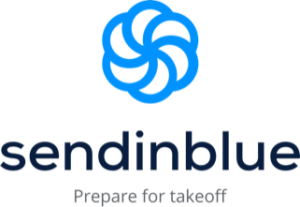




 eport and CEO Mike Rusch shares the results from their survey of mostly small- and mid-size nonprofits, plus his recommendations.
eport and CEO Mike Rusch shares the results from their survey of mostly small- and mid-size nonprofits, plus his recommendations.
